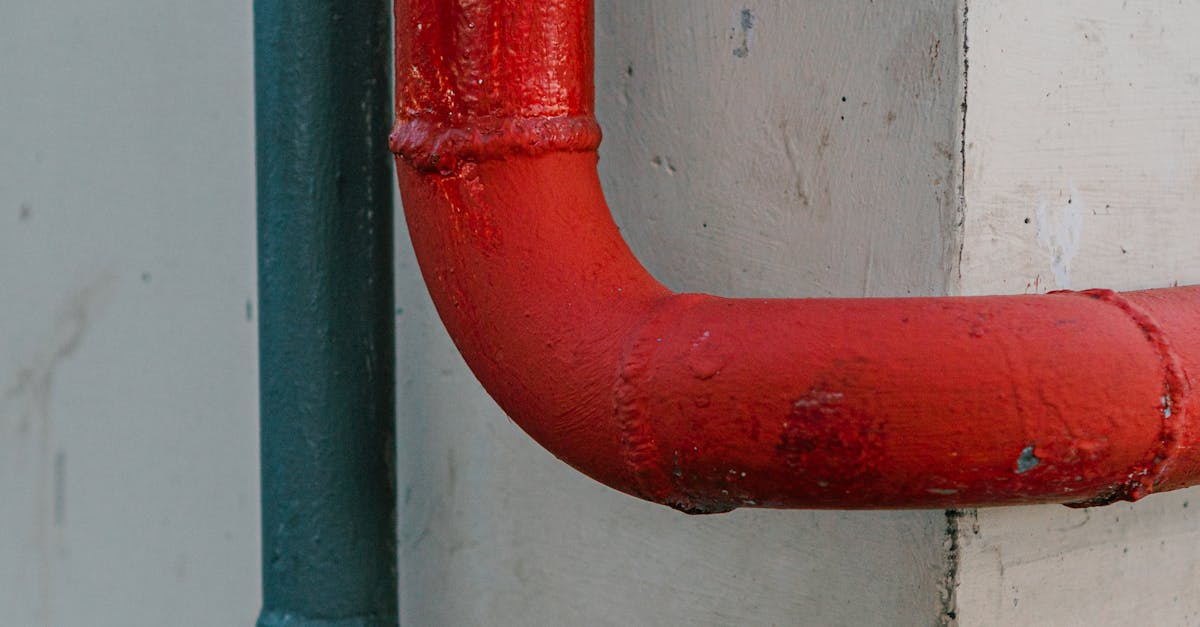
Table Of Contents
Backflow Prevention in Residential Properties
Backflow prevention in residential properties is crucial to ensure the safety and cleanliness of the water supply. In homes, backflow can occur when there is a sudden drop in water pressure or when the water flow is reversed due to back siphonage or back pressure. This can lead to contaminated water entering the clean water supply, posing serious health risks to residents. To prevent this, homeowners should consider installing backflow prevention devices such as backflow prevention valves on their plumbing systems, especially in areas where there is a higher risk of backflow incidents.
Regular maintenance and inspections of backflow prevention devices in residential properties are essential to ensure their proper functioning. Homeowners should schedule annual checks with licensed plumbers to test and certify the effectiveness of these devices. Additionally, being mindful of potential cross-connections within the plumbing system, such as garden hoses left in standing water or improperly installed irrigation systems, is crucial in preventing backflow incidents. By taking proactive measures and staying informed about backflow prevention techniques, residents can safeguard their water supply and protect their health.
DIY Backflow Prevention Tips for Homeowners
DIY Backflow Prevention Tips for Homeowners
Backflow prevention in residential properties is crucial to safeguard against contamination in water systems. One effective tip for homeowners is to install backflow prevention devices such as check valves on all water lines entering the property. Regularly test and maintain these devices to ensure they are functioning correctly. Additionally, it is essential to be mindful of cross-connections between potable and non-potable water sources, such as irrigation systems or boilers. Implementing air gaps or installing backflow prevention assemblies can help mitigate the risk of backflow in such situations. Regular inspections and proper maintenance of plumbing fixtures can also aid in preventing backflow incidents and maintaining water quality standards in homes.
Educating oneself on the potential causes and consequences of backflow incidents is vital for homeowners. Understanding the importance of backflow prevention in residential properties can empower individuals to take proactive measures to protect their water supply. Simple practices like avoiding submerging hoses in potentially contaminated water sources or installing hose bib vacuum breakers can help prevent backflow occurrences. Furthermore, being aware of local regulations and requirements regarding backflow prevention can guide homeowners in implementing adequate measures to mitigate the risk of cross-contamination. By prioritising backflow prevention and adopting preventive strategies, homeowners can contribute to ensuring the safety and quality of their water supply.
Backflow Prevention in Commercial Buildings
Backflow prevention in commercial buildings is crucial to ensure the safety of employees, customers, and the general public. In these settings, backflow incidents can occur due to various reasons, such as cross-connections between potable and non-potable water sources. To prevent such occurrences, implementing backflow prevention devices is essential. These devices help in maintaining the integrity of the water supply by ensuring that water flows in the intended direction and does not mix with contaminants.
Commercial buildings, especially those with complex plumbing systems, require professional assessment and installation of backflow prevention devices. Hiring certified plumbers or backflow prevention specialists is imperative to guarantee that the devices are correctly installed and functioning effectively. Additionally, regular maintenance and testing of these devices are necessary to ensure their continuous operation and compliance with regulations. Businesses must prioritise backflow prevention to uphold public health standards and avoid costly consequences that may arise from backflow incidents.
Professional Backflow Prevention Solutions for Businesses
Backflow prevention in businesses is crucial to maintain the safety and quality of the water supply. Professional solutions offer a comprehensive approach to preventing backflow incidents in commercial settings. These solutions encompass the installation of appropriate backflow prevention devices, regular inspections to ensure their functionality, and prompt repairs or replacements when needed.
Businesses can benefit from partnering with licensed professionals who have the expertise to assess the specific backflow risks associated with their premises. Through tailored strategies and preventive measures, businesses can mitigate the potential for contaminated water to flow back into the public water system. By prioritising backflow prevention, businesses not only adhere to regulatory requirements but also uphold their commitment to protect the health and well-being of employees, customers, and the broader community.
Emergency Response for Backflow Incidents
In the event of a backflow incident, immediate action is crucial to prevent contamination of the water supply. Backflow prevention in residential properties is vital to safeguarding the health and safety of all occupants. If you suspect a backflow issue, stop using water immediately and contact a licensed plumber to assess the situation. Avoid drinking or using any water until the problem has been resolved to prevent potential health risks.
Commercial buildings must have robust backflow prevention measures in place to mitigate the risk of contamination. Professional backflow prevention solutions for businesses are essential to ensure compliance with regulations and protect public health. In the event of a backflow emergency, businesses should follow specific steps to contain the problem promptly and engage qualified professionals to rectify the issue. Implementing a comprehensive backflow prevention plan can minimise the impact of incidents and maintain the integrity of the water supply system.
Steps to Take When Facing a Backflow Emergency
In the event of a backflow emergency, swift action is crucial to prevent further contamination and potential health hazards. The first step is to locate the main water supply shut-off valve for your property to stop the flow of water immediately. Once the water is turned off, it is essential to contact a licensed plumber or the local water authority to assess the situation and address the backflow issue promptly. Backflow prevention in residential properties is a critical aspect of maintaining water quality and protecting the health of occupants.
While waiting for the professional assistance to arrive, avoid using any water fixtures in your property to prevent the backflow contamination from spreading further. It is advisable to inform all occupants of the property about the backflow emergency and to refrain from consuming any water until the issue is resolved. Taking proactive steps during a backflow emergency can help prevent potential health risks and damage to the plumbing system. Backflow prevention in residential and commercial buildings is essential to ensure the safety and well-being of individuals and the community.
FAQS
What is backflow prevention?
Backflow prevention is a system or device designed to prevent contaminated water from flowing back into the clean water supply, ensuring the safety and quality of the water.
Why is backflow prevention important in residential properties?
Backflow prevention in residential properties is crucial to protect residents from potential health hazards caused by contaminated water entering the drinking water supply due to backflow incidents.
Can homeowners implement DIY backflow prevention measures?
Yes, homeowners can take proactive steps such as installing backflow prevention devices on their water lines, regularly maintaining their plumbing systems, and being aware of potential cross-connection risks to prevent backflow issues.
How does backflow prevention work in commercial buildings?
In commercial buildings, backflow prevention systems are typically more complex and may require professional installation and maintenance to comply with regulations and safeguard the health of employees and customers.
What should businesses do in case of a backflow emergency?
In the event of a backflow emergency in a commercial building, businesses should have a clear emergency response plan in place, including contacting professional backflow prevention specialists to address the issue promptly and effectively.


